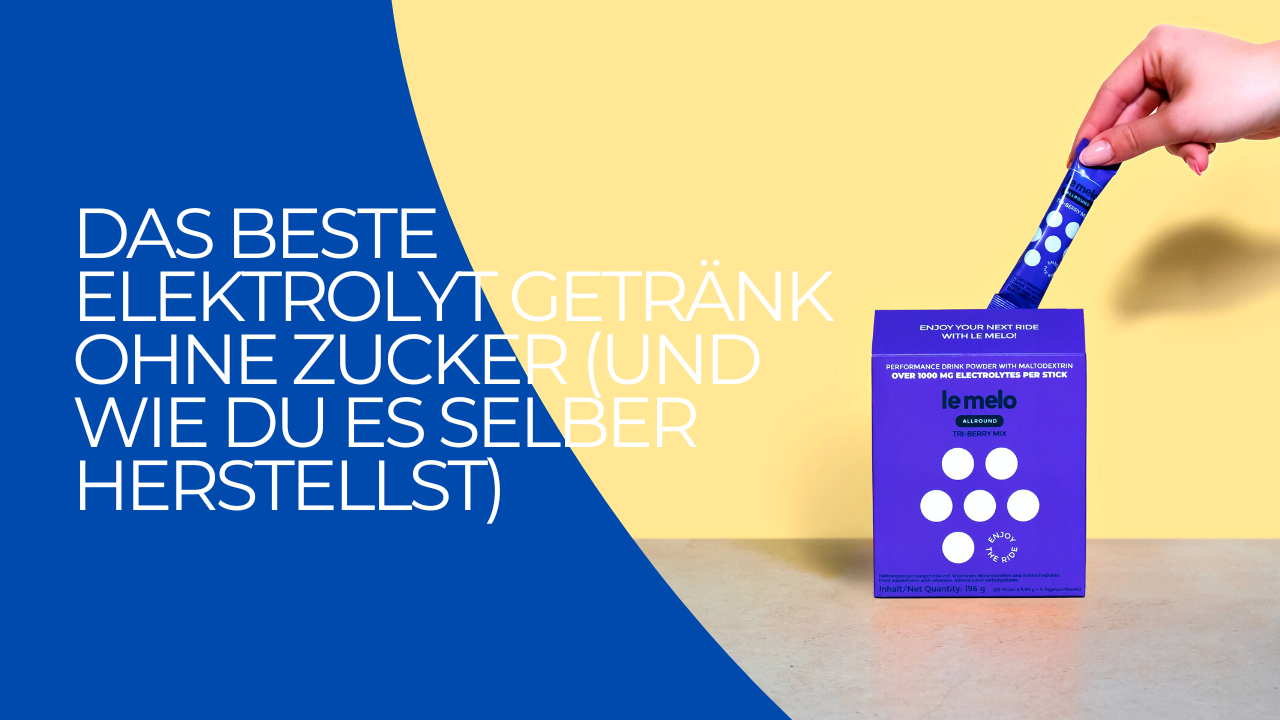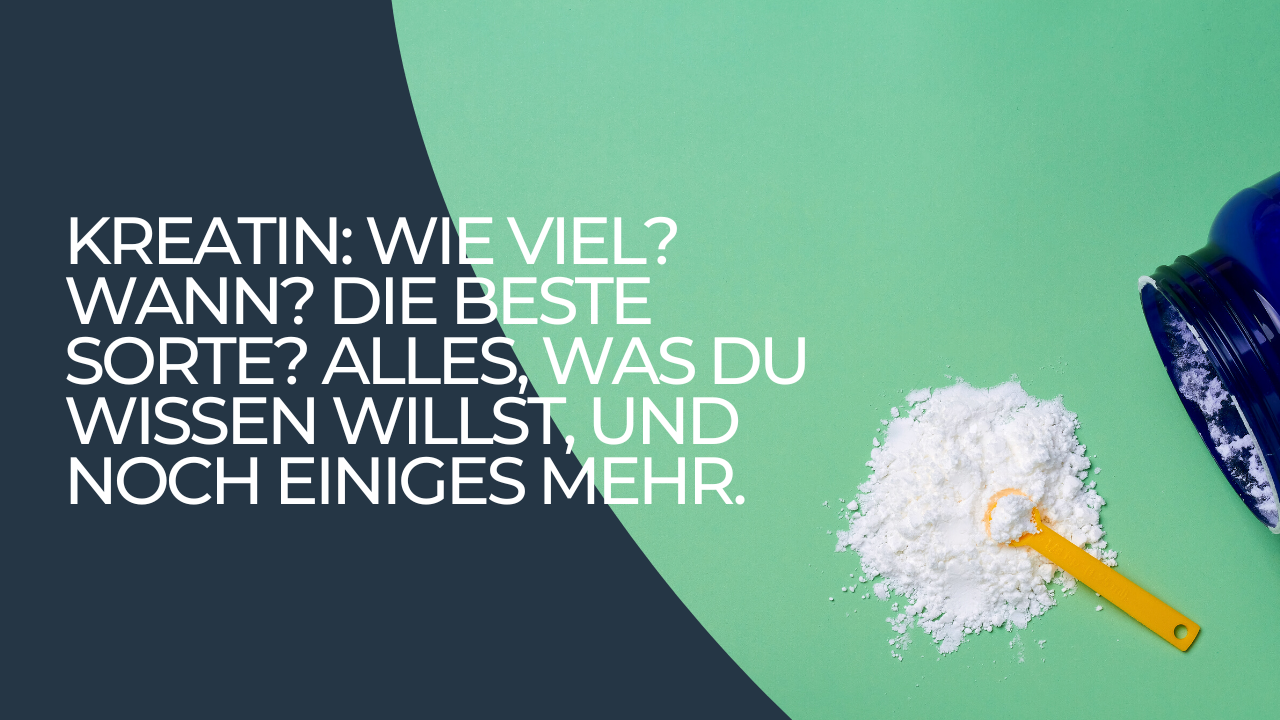If you want to limit sugar, your options for electrolyte drinks are limited. Because most sports drinks simply contain too much sugar...
Most people are at least somewhat aware that sugary drinks are not the best sports drinks. But they still drink them - somehow I have to think so Electrolytes get it, right? But a look at the list of ingredients shows that mostly Electrolytes missing, not to mention “good” ingredients.
You'll never find more than a few hundred milligrams of sodium. And that doesn't even begin to answer the question of potassium or magnesium.
A few hundred milligrams of sodium is almost negligible when you look at the data. Athletes can lose up to 7 grams of sodium per day when training in warm climates.
Another disadvantage: the liquid sugar. And most of them Electrolyte drinks contain tons of them.
Oral rehydration solutions or so-called hydration products also contain sugar, usually in the form of glucose (instead of alternatives with a high fructose content). These supplements are “somewhat” effective at replacing lost fluids and electrolytes, but the claim that you need sugar for daily hydration is simply not true. I'll get to that later.
I will also address the issues of sugar and electrolyte drinks. Then I'll show you how you can easily mix your own sports drinks.
But first, let’s talk about the most basic form of hydration.
https://www.le-melo.com/products/probierset-18sticks
WHAT ACTUALLY IS HYDRATION?
Most people think that hydration is just about drinking water. However, I define hydration a little differently, namely as the optimal fluid balance in the body.
Of course, according to the dictionary, drinking water is correct by definition. But looking at fluid balance as a whole is much more useful for staying healthy and feeling good.
WHAT IS AN OPTIMUM FLUID BALANCE?
It's about having the perfect amount of water in your body to keep your blood flowing, your skin moist, and your brain in your head (sounds a bit drastic, but hopefully you know what I mean).
By weight, we consist mainly of H2O. It is important to distribute it correctly.
In a person with healthy kidneys, fluid balance occurs fairly automatically. For example, if you drink too much water, the antidiuretic hormone is suppressed and you excrete the excess.
On the other hand, if you don't drink enough water, the osmoreceptors in your brain sense it. Then you get thirsty, drink something, and the system is back in balance.
But water is not the only factor that influences this system. This is where electrolytes come into play!
WHAT DO ELECTROLYTES DO?
Electrolytes are charged minerals that have many functions in the human body:
- Electrolytes conduct electricity to enable cell communication
- Electrolytes regulate the heartbeat
- Electrolytes mediate the activity of many hormones
- Electrolytes regulate inflammatory processes
- Electrolytes regulate fluid balance (blood pressure, etc.)
Let us pay particular attention to the last point. It is most important for hydration and hydration.
Of the Electrolytes Sodium and potassium are the most important regulators of fluid balance. Sodium regulates extracellular fluid balance (fluid outside cells) and potassium regulates intracellular fluid balance (fluid inside cells).
Sodium and potassium are supplied through food, dietary supplements and electrolyte drinks and are excreted through sweat, urine and feces. If more sodium and potassium are excreted than taken in, nutrient deficiency occurs and fluid balance becomes suboptimal.
The consequences of a sodium and potassium deficiency include:
- Headache
- fatigue
- Low energy
- Muscle cramps
- “Brain fog” or clouding of consciousness
Severe cases of sodium deficiency (called hyponatremia) can lead to seizures, brain damage, or death. Hyponatremia is often caused by excessive consumption of sodium-free water, as is common among endurance athletes. When athletes rehydrate with saline water, hyponatremia is reversed.
But even mild cases of sodium deficiency can cause an energy deficit. This is common in keto athletes (known as "keto flu") because a low-carb diet leads to increased sodium loss through urine - because sodium is also lost through sweat.
A low serum potassium level (hypokalemia), on the other hand, is usually due to potassium losses through diarrhea or vomiting.
The conclusion is that a daily electrolyte drink should focus on sodium first and then potassium.
However, there are rumors that sugar is useful for absorbing electrolytes. Should a daily electrolyte drink also contain sugar?
NEED SUGAR FOR BETTER HYDRATION?
No, you don't need sugar for hydration. But glucose can speed up electrolyte absorption.
Sodium and glucose share a pair of transporters in the small intestine - SGLT1 and SGLT2. These transporters help move sodium, glucose and fluid through the intestines into the bloodstream.
Adding glucose to a hydration solution increases the net intake of sodium and fluid. This is the basis for oral rehydration therapy (ORT) - a procedure used in hospitals to rehydrate patients with infectious diarrhea and other illnesses. The ORT has been very helpful in combating cholera epidemics in recent decades.
PLACE works. That is undeniable. But do you need the sugar? Consider the following:
In addition to glucose, many other compounds (ketones, amino acids, butyrate and phosphorus) also transport sodium through the intestines.
Sodium can diffuse through the intestine even without a co-transporter.
A salt water solution effectively reversed exercise-induced hyponatremia in long-distance runners. No glucose required.
The last point is directed against the sugar itself. A little glucose can be tolerated, but consuming too much sugar has negative consequences. That's why we avoid sugar in some of our products.
THE PROBLEM WITH SUGAR DRINKS
The average European consumes a whopping 17% of their calories from added sugar. That's almost 20 teaspoons on a 2,000 calorie diet.
Most of this sugar comes from sweetened drinks and foods. Many electrolyte drinks - like Gatorade, Powerade, and anything that has an iridescent blue color - fall into this category.
The consequences of excessive sugar consumption are beyond the scope of this article. (I wrote a whole blog about how sugar makes us sick).
But check out this partial list of chronic diseases linked to higher sugar intake.
Chronic diseases associated with sugar consumption:
- Heart disease. For every sugary drink consumed daily, the risk of heart disease increases by 10-20%.
- Type 2 diabetes. In over 90,000 women, drinking more than one sugary drink per day (compared to one drink per week) increased their risk of developing type 2 diabetes by 83%.
- Cancer. High blood sugar due to high sugar consumption promotes cancer through the Warburg effect. (Warburg discovered that cancer cells love glucose). Mice that consumed the equivalent of one sugary drink per day developed more colon cancer than control mice.
- Kidney disease. When healthy adults consumed 2 liters of soda after exercise, they showed signs of kidney damage.
And that's not all. Sugar is driving the obesity epidemic. Higher sugar consumption is associated with higher rates of cognitive decline. Sugar makes intestinal problems worse. The list goes on, but you get the point. Plus, sugar isn't the only problem with most electrolyte drinks.
PURCHASED ELECTROLYTE DRINKS: ADVANTAGES AND DISADVANTAGES
Now let’s talk about the good, the bad, and the really bad of electrolyte drinks.
#1: SPORTS DRINKS
There are three big problems with this Sports drinks :
- They contain too much sugar
- They hardly contain any electrolytes (such as sodium)
- They contain artificial ingredients that you don't want
Apart from the short-term taste sensation, there is nothing positive about them.
#2: ORAL REHYDRATION SOLUTIONS
Oral rehydration solutions such as Elotrans are useful to provide fluids and fluids in critical situations Electrolytes to replace. If your child is sick, Elotrans can be a useful medicine.
Of course, these solutions also contain sugar. And if you eat a low-sugar diet as part of a low-carb or keto diet, even 6 grams of sugar is not insignificant.
They also contain artificial colors, flavors and sweeteners with unknown effects on human health. They are not an option for daily hydration.
#3: ELECTROLYTE WATER AND MINERAL WATER
Can't you just get the electrolytes from carbonated mineral water or cleverly packaged "electrolyte water"? Unfortunately, this is a hopeless strategy.
Although mineral water contains some calcium, it is usually low in sodium and potassium. Enjoy the products for good health, but don't rely on them for electrolytes.
Additionally, store-bought electrolyte water is often not real electrolyte water. It's just water with a hint of minerals for flavor. Don't be fooled by such words and check the ingredients.
#4: COCONUT WATER
Oscar Wilde once said that “everything that is popular is wrong.” He probably exaggerated a bit, but he has a point about the popular coconut water.
Coconut water is a good source of potassium, but it is low in sodium. And be careful: even coconut water without added sugar has a high sugar content.
HOW TO MAKE YOUR OWN LOW SUGAR ELECTROLYTE DRINK
There are two ways to get enough electrolytes through a sugar-free electrolyte drink:
The easy way
The simple method involves mixing water, salt, potassium and magnesium with a squeeze of lemon or lime. This is what we call a home brew electrolyte drink.
Do you want a noticeably salty taste? Not like sea water, but you should taste the salt like you would taste it in a margarita, or even a little stronger.
In total, you should aim for 5 grams of sodium per day. (That's about 12.5 grams or 2.5 teaspoons of salt). You may need to increase this amount if you lose a lot of sodium through sweating.
Five grams of sodium sounds like a lot, I know. Isn't all that sodium bad for your heart? Not according to a 2011 JAMA study. In that study, researchers found that 5 grams of sodium per day is best for heart health. Most people need more salt, not less.
The even easier way
It's even easier if you have a sugar-free one Electrolyte drink mix how to use le melo. It contains enough sodium and is ready to use in practical sticks.
Yes, I am biased on this topic. I developed le melo together with friends and athletes. It's our product. But we created it so we (yes, ourselves included) could have a delicious electrolyte drink on demand.
Whether you use le melo or mix a drink yourself, you'll save yourself a trip to the store. And you'll also drink more fluids. Not a bad deal, right?
But for me this wasn't enough, so we thought about how we could make sports drinks EVEN better. How can we help regenerate faster, prevent our blood sugar levels from skyrocketing, etc. I'll write about that in another post...







